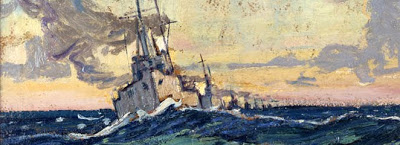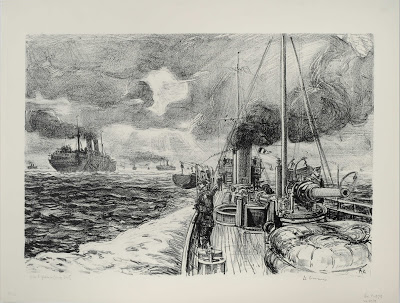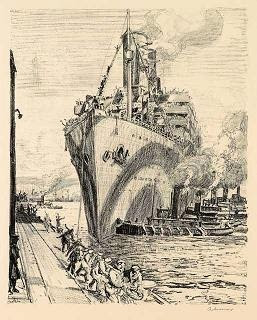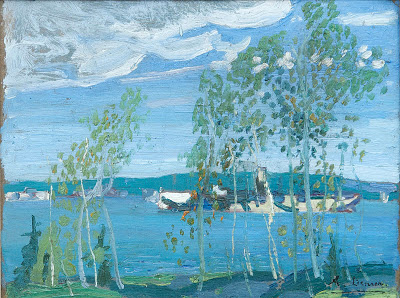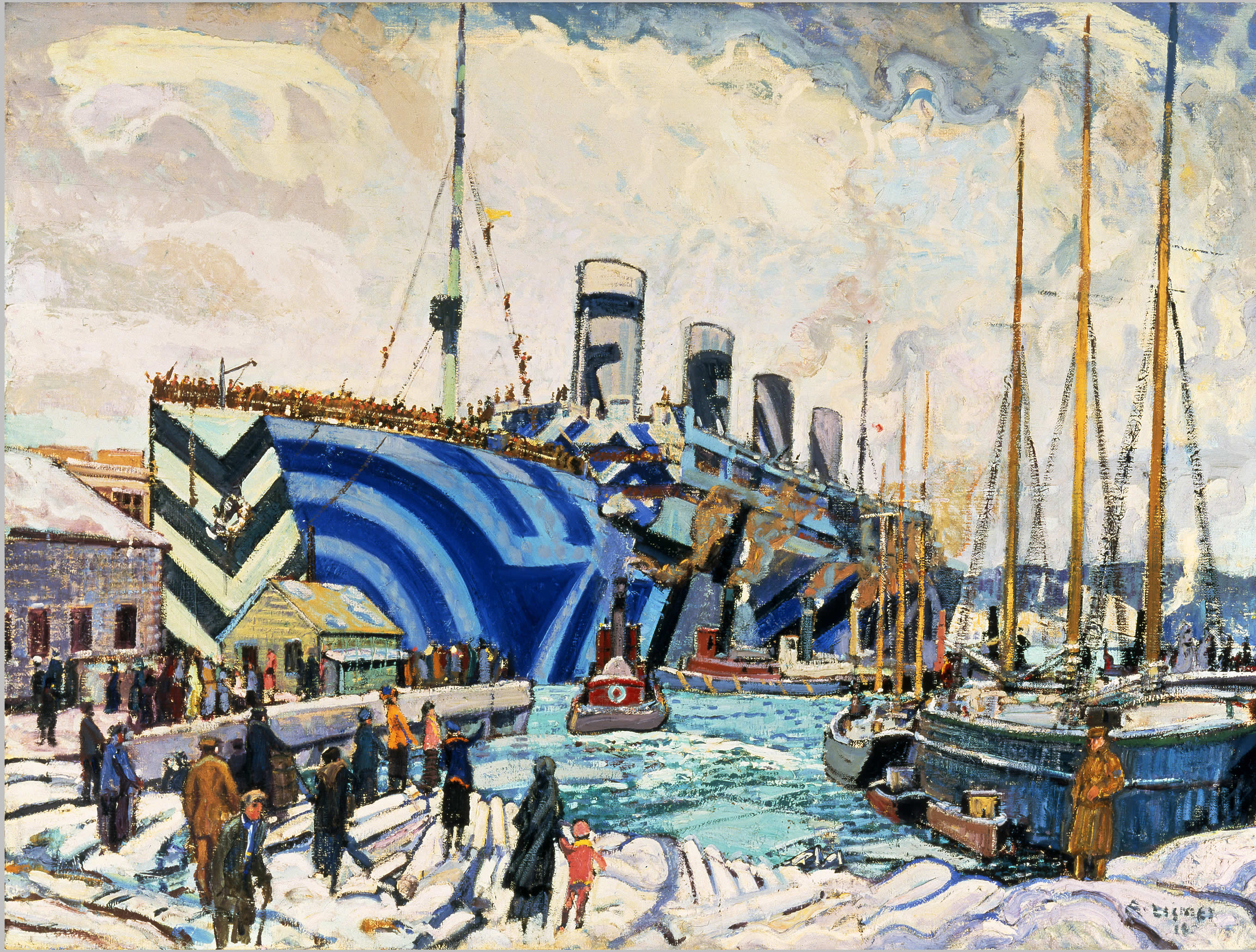Most people are familiar with grand paintings commemorating great victories and heroes of wars. These hang in galleries around the world, Including Examples such as Benjamen West’s “Death of General Wolf”, which hangs at the National Gallery of Canada.
Beyond these Examples, Fewer people Are familiar with the War Art programs of the first and Second World Wars. Artists received official Commissions form the government to document the war effort. Some of these paintings are triumphant, But most show the dramatic effects of war. The First World War had a great influence on the Group of Seven. A.Y Jackson and Frederick Varley served with the infantry, and the style of their work is different in the pre and post war periods. – Post war their landscapes almost look dead.
Arthur Lismer, another founding member of the group, spent the War in Halifax. He was at the time serving as the director of the Nova Scotia College of Art. He received a commission to Document the Activities in the Harbour.
Lismer; HMCS Grilse on Convoy Duty
Lismer; The Transport Aquitania
Lismer’s works detailed the comings and goings of ships, Harbour patrols and Mine sweeping, and serve as a vibrant reminder that the war touched us here on the home front.
One Final Footnote – The Jagged paint Schemes on the ships was called Dazzle. It was meant to Disrupt the eye and make ships courses harder to determine. It was Proposed by Painter Norman Wilkinson (who painted Canada’s Answer), In part to Discredit the Cubist Movement.
Olympic with Returned Soldiers

